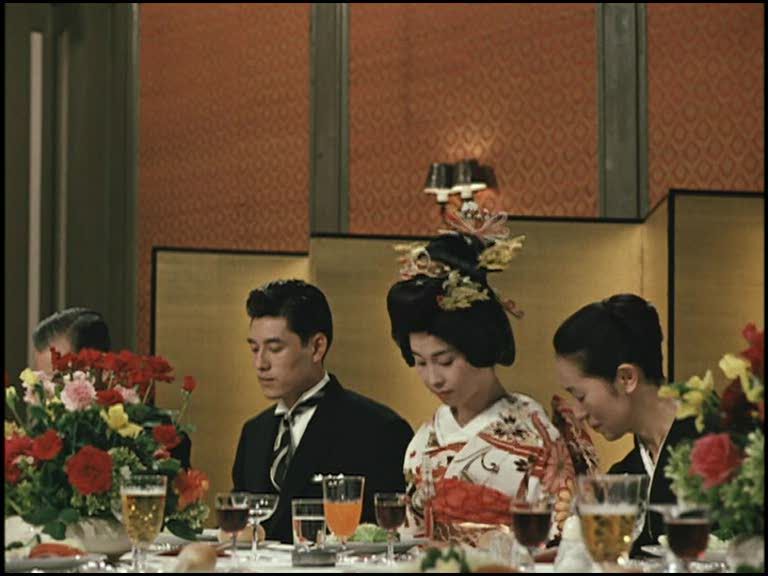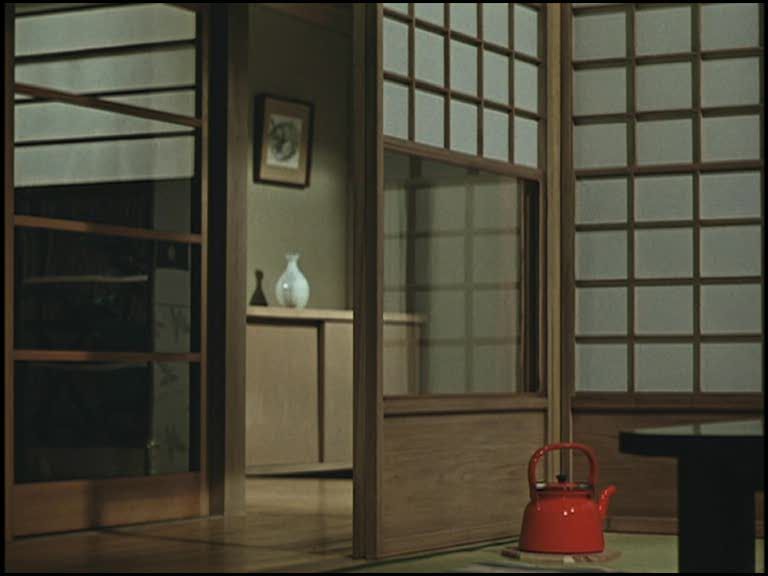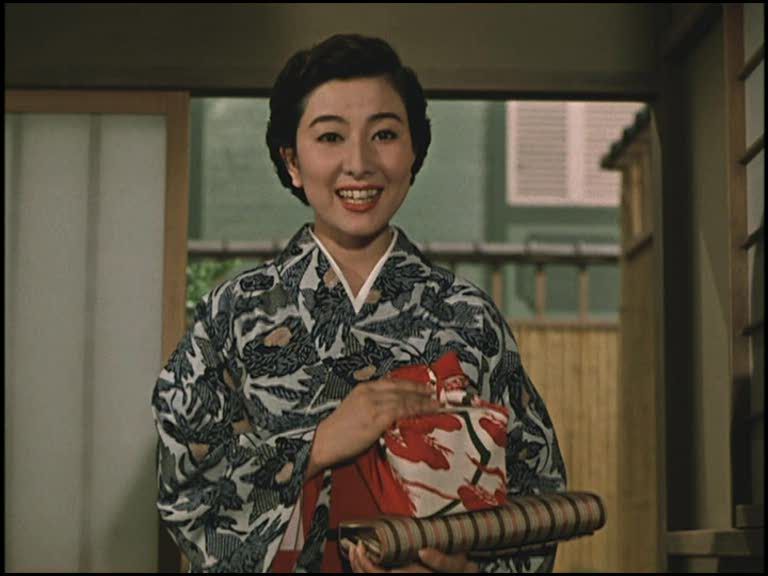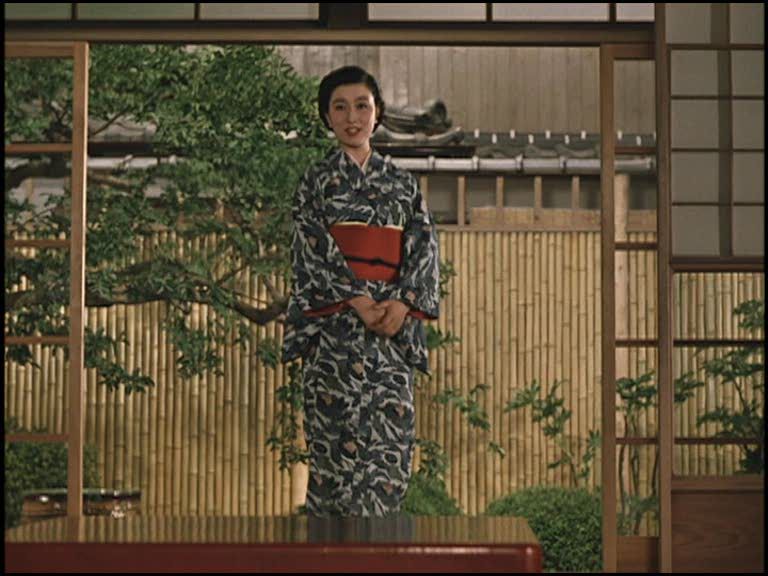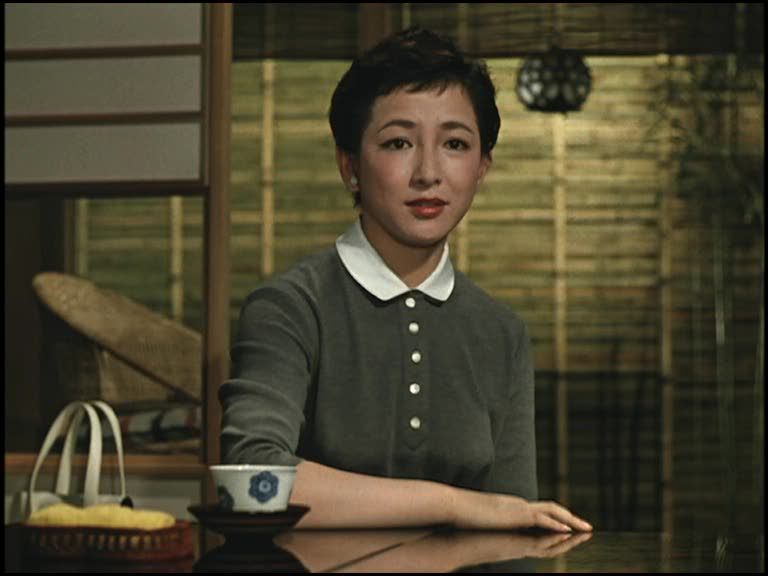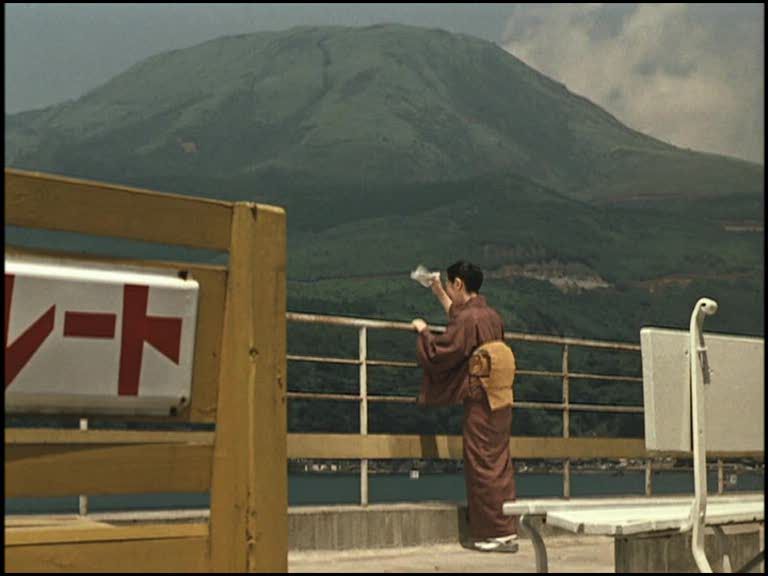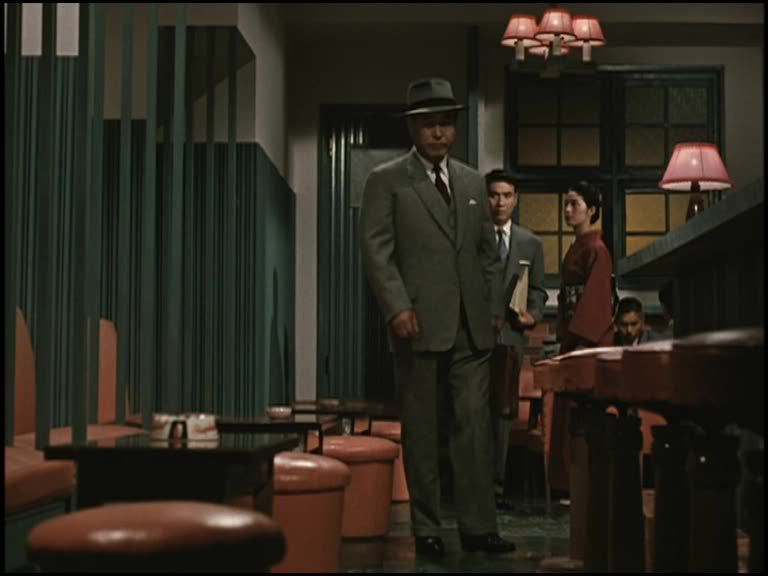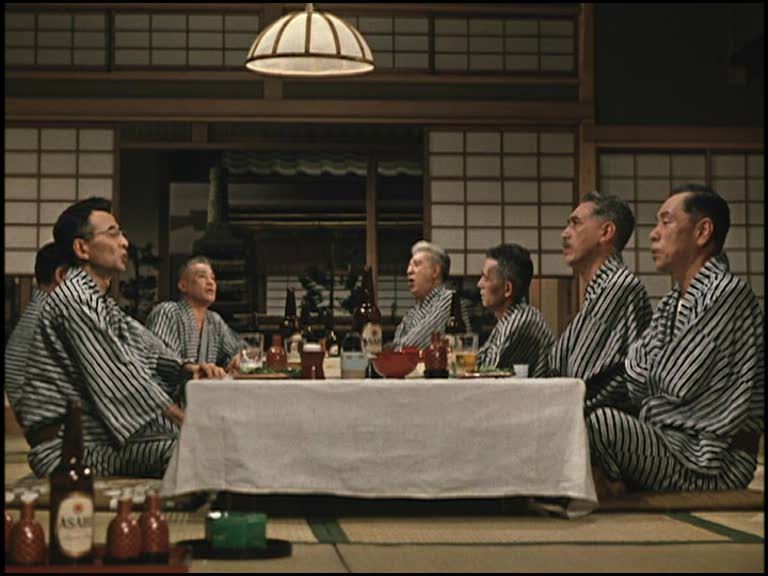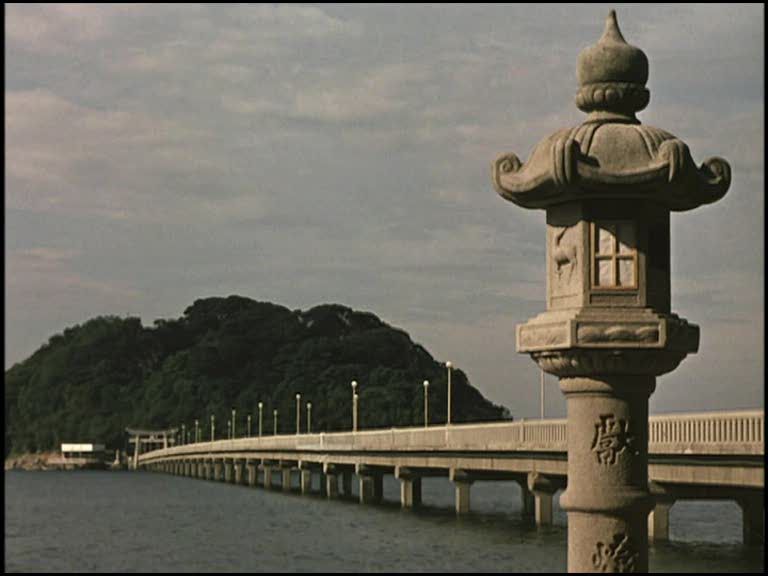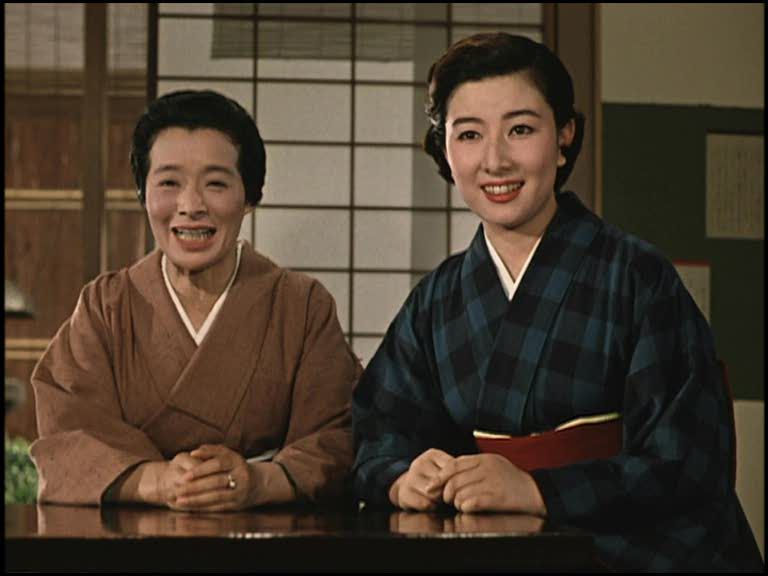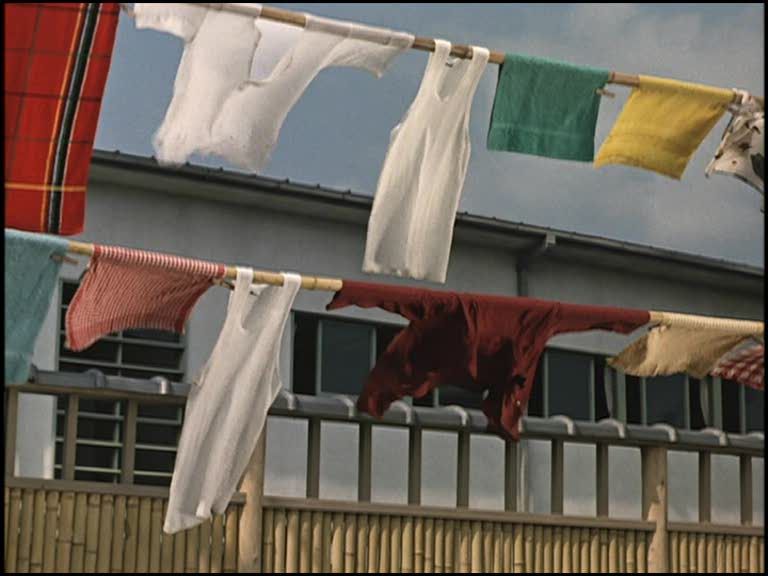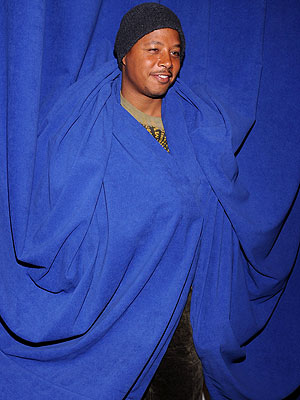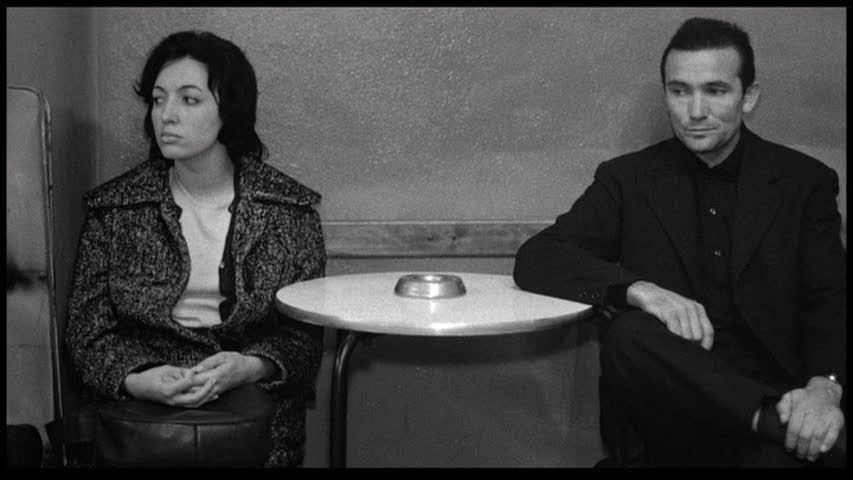
It is hard to imagine a better, more stirring and heartfelt tribute to the military spirit than John Ford's sublime, lovingly rendered She Wore a Yellow Ribbon. It is a love letter to the uniformed military man, and especially to the frontier men of the U.S. Cavalry, from a director who has always been enthralled by the army life. Ford loves the routine and ceremony of the army, he loves the salutes and formal language, he loves the rigidity of the formations and the close, affectionate bonds that form between the men. Most of all, though, he loves the look of things: the bright blues and golds of the uniforms, which never seem to fade no matter how dirty and dusty they get; the red and white standard flag held high above the ranks; the glint of the sun off the polished silver of a sword or a bugle. There's real poetry in Ford's representation of these men, an eye for the beauty of the military life that's almost entirely divorced from the facts of military combat and bloodshed. This is an idealized vision of the military, in which nearly nobody suffers so much as a wound; only one cavalryman actually dies on screen in the entire film, and it's a frequent occurrence for the troops to emerge from a fierce, violent battle only to announce, "no casualties."
Ford almost seems to prefer his military men when they're at rest and at peace, rather than in the middle of a battle. The most lovingly photographed sequences — and there are many, in a film where virtually every other frame is awe-inspiring — are simple shots of the cavalry riders winding through a valley beneath a towering rock, or scenes where the commanding officers inspect a line of troops in the morning. When the plot turns to the inevitable skirmishes with Indians, they seem almost perfunctory in comparison, though still exciting and dramatic. It's as though Ford knew he had to include them but did so only for the sake of that obligation. It is surely no coincidence that the film's narrative arc concerns halting a war rather than fighting one. This is basically a film about the desire for a peacetime army, which for Ford would surely be the ideal army: then one could admire all the shiny buttons and tight rows of men without the possibility of bloodshed and violence to interrupt the ceremony.

Ford's previous film about the cavalry, Fort Apache, acknowledged the harsh consequences of military service, accepting the darker side of military discipline and the possibility that vain, selfish commanders can needlessly waste the lives of blindly obedient young men. There is no trace of that subtext or anything like it here, in a film where obedience and respect for elders are the highest virtues a man can possess. This film is about the director's profound and unabashed love of the military and the men who serve in it as much as it's about anything. Indeed, there's little enough room in the film for anything else. It is a film almost entirely devoid of real drama, though there are plenty of smaller conflicts to suggest that drama might be somewhere over the horizon. The film centers on cavalry officer Nathan Brittles (John Wayne), a sixtyish man on the verge of entering a forced retirement; the army has decided he is too old and has entered his resignation for him. As he forlornly counts down the days, along with his jovial Irish sergeant Quincannon (Victor McLaglen), he is assigned one final mission: to escort his superior officer's wife and niece away from the fort while scouting out and chasing off the aggressive Cheyenne patrols encroaching into the area.
Brittles leads his men through dangerous territory towards the stagecoach waystation where they're supposed to drop off the womenfolk. Along the way, he has to keep peace between dueling lieutenants Cohill (John Agar) and Pennell (Harry Carey Jr.), who are sparring over the love of Olivia (Joanne Dru), one of the women they're escorting. Even this is something of a foregone conclusion; it's obvious that Olivia loves Cohill even though they often butt heads, and after a while the love triangle is defused without much fuss. Ford simply isn't interested in igniting too much drama here. He throws up only enough sparks to keep things interesting, to initiate opportunities for a character study of the opposing lieutenants: Cohill is stubborn and sometimes snarky but basically decent; Pennell is a spoiled, hotheaded rich kid who impulsively plans to quit the cavalry but eventually simmers down and settles into his secondary role. The film is much more about mood than narrative, and the plot basically boils down to the cavalry line leaving the fort, fending off several quickly paced Indian attacks, and then returning the way they came. It's an utterly and intentionally circular film, which is perhaps why the same striking rock formations from Ford's prized location of Monument Valley keep recurring, even when actions are obviously meant to be taking place in widely separated locations.

This setting is not, then, an accurate depiction of a Western frontier, but a patently artificial pastiche of archetypal Western images, with locations chosen not for geographical fidelity or logic but for their grand, imposing appearance. It is a film filled with overpowering vistas, frames evenly divided between the broad expanses of brown rock and green fields and the pale blue of the sky, alternately padded with fluffy cotton or darkened to a dirty gray with the roiling cloud masses of a thunderstorm. Within these gorgeous landscape shots, the cavalry lines advance, a row of tiny blue dots sketched across the red-brown rock. Ford's West is populated only with the West's grandest vistas, its most beautiful and awe-inspiring locations; there is no room for any plain, ugly expanse in Ford's conception of the West, no room for an image that does not impart a sense of the poetry that exists in simply walking or riding through this majestic scenery. When actual scenery doesn't suffice, Ford resorts to the even more obvious artificiality of a constructed set, like the red-tinted light washing over the plaster graveyard where Brittles mourns for his dead wife and daughters. If there is one thing Ford is definitively not trying to capture, it is realism, perhaps because any realistic evocation of this milieu would spoil the poetry and beauty with a great deal more blood. The only red he is interested in here is the glow of the sunset.
With this lyrical, meditative film, Ford has composed his ultimate ode to military virtues and the colorful, ceremonial splendor of uniformed life. There are occasional missteps, like the stirring, patriotic voiceover that opens the film and unexpectedly returns for the awkward, overly prolonged denouement. This narration is tonally wrong, though its words basically just reinforce the open admiration for the cavalry that is already there in every frame of the film. Ford hardly needs these words to say what he'd already spent nearly two hours saying: how magical the frontier was; how grand the military man was and is; how brave; how shiny his buttons.










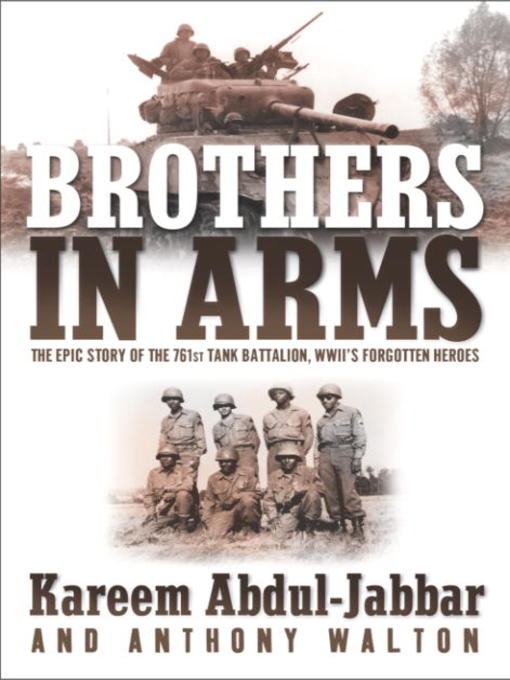 But, back to your question -- Steve started interviewing several of the soldiers after agreeing to help to pay for their reunions so they could continue to have this yearly solace. The NY Times articles stayed with him in his heart for quite some time and he decided to go meet with the head of their Allied Veterans society in Chicago. He teamed up with the unit historian, Wayne Robinson (also a tanker, but in the Gulf War) and they compiled about 50 hours of interview footage.
But, back to your question -- Steve started interviewing several of the soldiers after agreeing to help to pay for their reunions so they could continue to have this yearly solace. The NY Times articles stayed with him in his heart for quite some time and he decided to go meet with the head of their Allied Veterans society in Chicago. He teamed up with the unit historian, Wayne Robinson (also a tanker, but in the Gulf War) and they compiled about 50 hours of interview footage. Clearly, I can keep going on and on about these guys, but to bring some conclusion to your questions, I was amazed by their story and the fact that they had fought in Europe, and many died, for freedoms that they did not enjoy in America. They were a reflection of true patriotism and I can't wait for people to see the film! We are working on getting it out on DVD in the next couple months, and I think it's some of my better work -- I became a better and more economical writer as a result of writing this narration and streamlining years of history into something palatable for a general audience. Andre Braugher narrates the film ... a lot of people don't know that because the trailer was cut while we were still editing but he did the narration wonderfully and I think part of his motivation was that he had played Jackie Robinson in a cable tv movie in the early 90s and Jackie Robinson had been a member of the 761st. The history is rich...trust me. And getting a remarkable talent like Andre Braugher to narrate this independent doc falls in line with the answer I gave to your first question about casting.
Clearly, I can keep going on and on about these guys, but to bring some conclusion to your questions, I was amazed by their story and the fact that they had fought in Europe, and many died, for freedoms that they did not enjoy in America. They were a reflection of true patriotism and I can't wait for people to see the film! We are working on getting it out on DVD in the next couple months, and I think it's some of my better work -- I became a better and more economical writer as a result of writing this narration and streamlining years of history into something palatable for a general audience. Andre Braugher narrates the film ... a lot of people don't know that because the trailer was cut while we were still editing but he did the narration wonderfully and I think part of his motivation was that he had played Jackie Robinson in a cable tv movie in the early 90s and Jackie Robinson had been a member of the 761st. The history is rich...trust me. And getting a remarkable talent like Andre Braugher to narrate this independent doc falls in line with the answer I gave to your first question about casting.

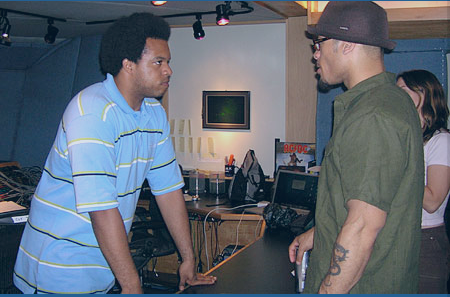 Mastering your craft. I've got a long way to go, and the hard thing about directing is that you can't work that muscle as often as you can the writing muscle because you need the camera, crew, money, idea, etc to flex with rather than just a computer or a pad or diary or something. Film school is great to nurture the contacts and seek guidance of working professionals, and have a certain stamp of credibility upon graduation, but it doesn't define you. To be honest, I've learned most of what I know since I graduated film school by just doing. My final point is that talent isn't going to be earned anywhere. Y'all could drop me off at Julliard today and come back in 2 years and you're not gonna hear a concerto coming out of my dorm room. But a film -- that's another thing!
Mastering your craft. I've got a long way to go, and the hard thing about directing is that you can't work that muscle as often as you can the writing muscle because you need the camera, crew, money, idea, etc to flex with rather than just a computer or a pad or diary or something. Film school is great to nurture the contacts and seek guidance of working professionals, and have a certain stamp of credibility upon graduation, but it doesn't define you. To be honest, I've learned most of what I know since I graduated film school by just doing. My final point is that talent isn't going to be earned anywhere. Y'all could drop me off at Julliard today and come back in 2 years and you're not gonna hear a concerto coming out of my dorm room. But a film -- that's another thing! I have on my wall "You Are the Will Smith of Directing" and by that I mean I need to direct something like "iRobot", and then make "Pursuit of Happyness". I need to make "Hancock" and then make "Seven Pounds". And throw a documentary in between. Even Spielberg had to make tons of money for the system before he could make "Schindler's List". People are naturally that way. How many times have you looked at all 200 items on the chinese food menu only to get shrimp fried rice or general tso's chicken for the millionth time? It's the reality of the situation, but I personally think that Will reaches more people -- more new people -- than a small indie film that essentially ends up preaching to the choir. When I saw "Pursuit of Happyness", I looked back (I like to sit in the front) and saw that the theater was packed with mostly senior citizen white couples. Change has come, and Obama cements it in the same way. You can have black characters doing black things (so to speak ) and it can still be universal, but for mainstream America the packaging is very important. Clearly, I'm getting tangential again, so I'm going to stop here!
I have on my wall "You Are the Will Smith of Directing" and by that I mean I need to direct something like "iRobot", and then make "Pursuit of Happyness". I need to make "Hancock" and then make "Seven Pounds". And throw a documentary in between. Even Spielberg had to make tons of money for the system before he could make "Schindler's List". People are naturally that way. How many times have you looked at all 200 items on the chinese food menu only to get shrimp fried rice or general tso's chicken for the millionth time? It's the reality of the situation, but I personally think that Will reaches more people -- more new people -- than a small indie film that essentially ends up preaching to the choir. When I saw "Pursuit of Happyness", I looked back (I like to sit in the front) and saw that the theater was packed with mostly senior citizen white couples. Change has come, and Obama cements it in the same way. You can have black characters doing black things (so to speak ) and it can still be universal, but for mainstream America the packaging is very important. Clearly, I'm getting tangential again, so I'm going to stop here! Thanks for the opportunity to talk to your audience. And I can't leave without a few plugs! Peep the links and join what suits you below:
Thanks for the opportunity to talk to your audience. And I can't leave without a few plugs! Peep the links and join what suits you below:
 So there is this guy Kam Williams that I never hear about except at the end of year where he gives his opinions on the year in Black film. Here are his views as he sees fit that I saw on
So there is this guy Kam Williams that I never hear about except at the end of year where he gives his opinions on the year in Black film. Here are his views as he sees fit that I saw on 


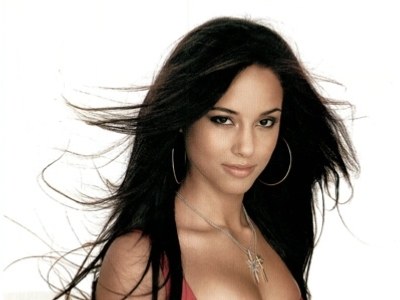


 -There were only a couple instances of side-eye; the soundtrack could sometimes get very loud and out of place (a la "The Cookout", work on that, Lance), and also the stylist in me noticed and was distracted by a couple of wildly inappropriate outfits...but when I saw the "Costume Designer" was Misa Hilton-Brimm, Puffy's first baby's mama, it made more sense. She is singlehandedly responsible for the whole 'ghetto fabulous' look, beginning with Lil' Kim and continuing on from there.
-There were only a couple instances of side-eye; the soundtrack could sometimes get very loud and out of place (a la "The Cookout", work on that, Lance), and also the stylist in me noticed and was distracted by a couple of wildly inappropriate outfits...but when I saw the "Costume Designer" was Misa Hilton-Brimm, Puffy's first baby's mama, it made more sense. She is singlehandedly responsible for the whole 'ghetto fabulous' look, beginning with Lil' Kim and continuing on from there. -The kids had just the right amount of sassiness, without being brats or getting on your nerves; (can anybody say "Are We There Yet?"-yikes) they almost seemed like real-life children.
-The kids had just the right amount of sassiness, without being brats or getting on your nerves; (can anybody say "Are We There Yet?"-yikes) they almost seemed like real-life children.
 -Speaking of Chris Brown, why is it in the first scene where he had his shirt off, all I could hear was WOOOOOO!!! By all males by the way. Interesting.
-Speaking of Chris Brown, why is it in the first scene where he had his shirt off, all I could hear was WOOOOOO!!! By all males by the way. Interesting.


